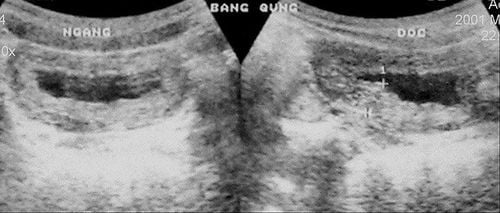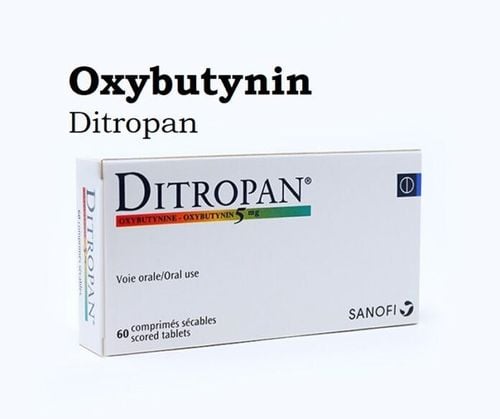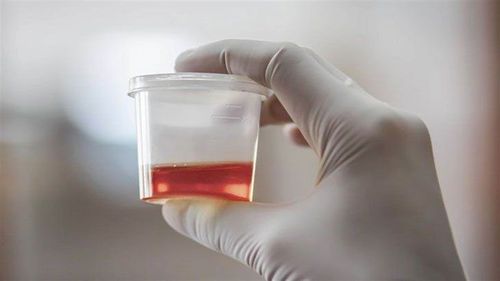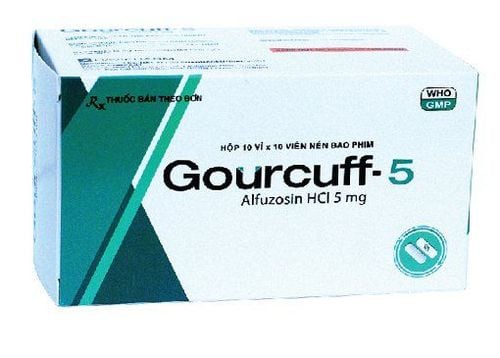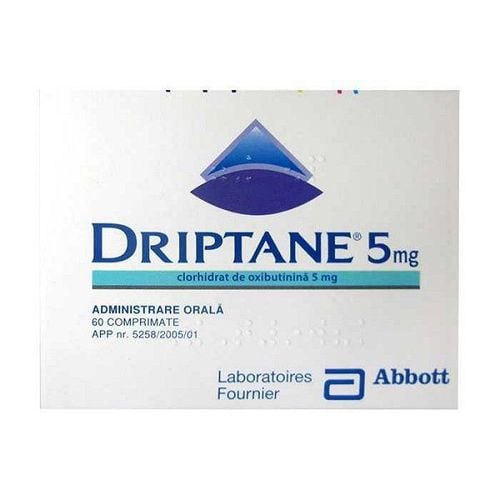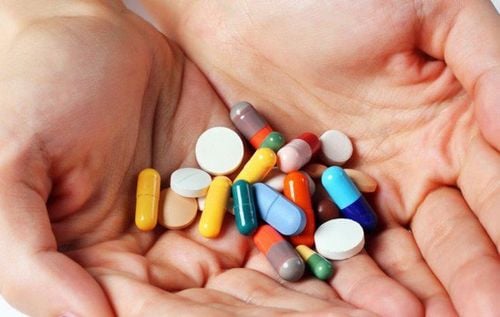This is an automatically translated article.
Overactive bladder syndrome, although not dangerous, often causes discomfort to patients, greatly affecting life, study and daily work. Some cases of patients with overactive bladder can affect psychology, especially young patients.
1. What is an overactive bladder? Is it dangerous?
Overactive bladder is a dysfunction of the bladder that holds urine. Specifically, when the bladder is overactive, the bladder will contract abnormally and without control, leading to a sudden feeling of needing to urinate, requiring immediate urination without being able to hold the urine.
In addition, overactive bladder is often accompanied by symptoms of urinary urgency, frequent urination during the day but without any urinary tract disease or other signs of UTI.
Overactive bladder syndrome, although not dangerous, often causes discomfort to patients, greatly affecting life, study and daily work. Some cases of patients with overactive bladder can affect psychology, especially young patients.
Usually, overactive bladder syndrome often occurs in elderly patients or those with certain risk factors such as neurological disease, urinary tract disease, women with multiple pregnancies, etc. ..The common causes leading to overactive bladder syndrome are:
Herniated disc, spinal cord injury leading to affected nerves; Traumatic pelvic surgery may be the cause of an overactive bladder; Some infectious diseases such as syphilis, herpes,... complications affect nerves; Hormonal changes during menopause in women cause overactive bladder syndrome to appear; Decreased kidney function or aging kidney cells, from which the bladder is no longer sensitive to nerve signals, causing uncontrolled contractions.
2. Overactive bladder symptoms
Overactive bladder syndrome often leads to a variety of signs and symptoms related to urinary disorders, which in turn make life more inconvenient for patients. Signs of overactive bladder syndrome are as follows:
The patient has signs of an urgent need to urinate and a feeling of needing to urinate. Overactive bladder syndrome also frequently causes urinary incontinence and urinary incontinence. The urge to urinate occurs immediately after the stimulus such as vigorous exercise, sneezing or coughing; Frequent urination during the day, can go 7-8 times a day. Waking up more than 2 times at night to urinate. Based on the symptoms of the disease, overactive bladder syndrome is divided into two types as follows:
Overactive bladder syndrome: This syndrome does not cause urinary incontinence and usually accounts for two-thirds of bladder infections. sudden contraction. Wet overactive bladder syndrome: This syndrome causes urinary incontinence, making the patient feel tired and always have psychological anxiety.

Hội chứng bàng quang tăng hoạt thường dẫn đến một loạt các dấu hiệu và triệu chứng liên quan đến rối loạn tiểu tiện
3. Diagnosis and treatment of overactive bladder syndrome
3.1. Diagnosis of overactive bladder syndrome In addition to the clinical signs and symptoms such as urgency, urinary incontinence, inability to hold urine and frequent urination at night, overactive bladder syndrome is accurately diagnosed through techniques. The following medical procedure:
Urinalysis: When the patient shows signs of suspicious symptoms of overactive bladder syndrome, the doctor will order a urine test. The analysis of urine samples will assist the doctor to identify urinary tract diseases, thereby making an accurate diagnosis for the patient to treat overactive bladder properly. Bladder ultrasound: An ultrasound of the bladder is a method to help measure the amount of urine left in the bladder, thereby assisting in determining urine stasis and urinary disorders if any. Urodynamic test: This test method is used to assess the bladder's ability to retain urine, thereby determining the most appropriate intervention method for the patient. Cystoscopy: This is considered an accurate imaging method of abnormal signs that cause the bladder to contract abnormally. In case of need, the doctor may order a biopsy of the bladder during endoscopy to get the most accurate conclusion. 3.2. Treatment of overactive bladder syndrome There are three main steps to treating overactive bladder: behavioral change, medication, and interventions when there are signs of drug resistance. Specific treatment options are as follows:
Behavioral measures:
Behavioral therapies are considered the first and important step in treatment for this syndrome. Often behavioral therapies can be combined with the use of antimuscarnics. Behavioral measures in the treatment of overactive bladder include:
Explain to the patient about normal and abnormal bladder function. Instruct the patient to write down detailed urination times. Then further instruct the patient about the appropriate interval between 2 urinations which is 3 - 4 hours. In particular, it is not necessary to urinate every time you feel the need to urinate. Adjust the diet by limiting some foods and drinks that cause bladder irritation or diuretics such as coffee, alcohol, sugary drinks... Adjust the patient's fluid intake according to the most suitable working and living conditions. Instruct the patient in technical exercises such as suppression and control of urge incontinence; bladder training; Exercise pelvic floor muscle contractions to aid in bladder control, thereby helping to treat urinary urgency or urge incontinence. Pharmacological measures:
To reduce constriction of the bladder cones, antimuscarinics (darifenacin, fesoterodine, oxybutynin, solifenacin, tolterodine and trospium) should be used, which have been clinically tested and controlled. proven effective in the treatment of overactive bladder syndrome. However, antimuscarinics drugs often cause some side effects for patients such as dry mouth, blurred vision, headache, heart palpitations, indigestion, constipation ... Some other drugs are also effective. in the treatment of overactive bladder, but the mechanism is not clear, such as flavoxate, tricyclic antidepressants or alpha-adrenergic antagonists. The new drug mirabegron also has a mechanism of acting on β3 adrenergic receptors in the bladder cone muscle, thereby helping to relax the muscle and increase bladder capacity. Interventions for drug resistance or intolerance:
When there are signs of drug resistance or intolerance, the alternative treatment is injection of onabotulinumtoxin A into the bladder. Another alternative is sacral nerve stimulation. This method means implanting electrode wires into the S3 sacral nerve root, then connecting to a pacemaker placed under the skin of the buttocks to stimulate the sacral nerve to regulate nerve reflexes that govern the muscles. perineum and bladder cones. However, this technique is indicated for the treatment of urinary retention in the bladder or symptoms such as urinary urgency and incontinence that are resistant to medication. Stimulation of the tibial nerve is a highly successful treatment method. In addition, the advantage of this technique is that it is less invasive and has few side effects. Intestinal bladder enlargement surgery is also indicated when the bladder has a small contractile capacity, bladder dysfunction that is caused by poor compliance. However, this is a highly invasive method, so bowel enlargement is only used when less invasive measures have been applied but have not been successful.

Điều trị bàng quang tăng hoạt hiện có 3 bước chính đó là thay đổi hành vi, dùng thuốc và các biện pháp can thiệp khi có dấu hiệu kháng thuốc
In case of suspected overactive bladder syndrome, the patient needs to go to a reputable hospital for timely examination and treatment. Currently, Vinmec International General Hospital is one of the leading prestigious hospitals in the country, trusted by a large number of patients for medical examination and treatment. Not only the physical system, modern equipment: 6 ultrasound rooms, 4 DR X-ray rooms (1 full-axis machine, 1 light machine, 1 general machine and 1 mammography machine) , 2 DR portable X-ray machines, 2 multi-row CT scanner rooms (1 128 rows and 1 16 arrays), 2 Magnetic resonance imaging rooms (1 3 Tesla and 1 1.5 Tesla), 1 room for 2 levels of interventional angiography and 1 room to measure bone mineral density.... Vinmec is also the place to gather a team of experienced doctors and nurses who will greatly assist in diagnosis and detection. early signs of abnormality in the patient's body. In particular, with a space designed according to 5-star hotel standards, Vinmec ensures to bring the patient the most comfort, friendliness and peace of mind.
Please dial HOTLINE for more information or register for an appointment HERE. Download MyVinmec app to make appointments faster and to manage your bookings easily.




